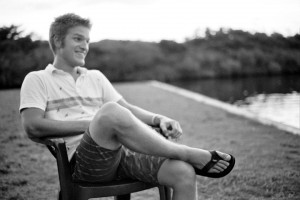This post and its photo is provided by Tristan Hall, a student from Florida State University on the Studies of Emissions and Atmospheric Composition, Clouds and Climate Coupling by Regional Surveys (SEAC4RS) airborne science mission.
Born and raised in northwest Ohio in a little town called Genoa, my first recollection of wanting to be a meteorologist was when my elementary school guidance counselor asked me what I wanted to be when I grew up. I chose the natural response that a child does – leaning toward the heroic profession of doctor – but my second and more enthusiastic response was “tornado chaser”. What second grader chooses storm chasing as their profession? Well, my guidance counselor thought the same evidently, because she laughed at me. It’s funny how some experiences really stick with you.
After receiving degrees in physics and geography from Appalachian State University (go Mountaineers!) with concentrations in atmospheric processes, I am now a Master’s student in meteorology at The Florida State University, conducting research under Dr. Henry Fuelberg. My focus is on pollution transport via mesoscale influences and deep convection in the Strait of Malacca. I’ve been storm chasing once and caught a tornado near Fairview, OK. I love everything weather, and am a major sucker for nature shows. Sitting and staring at the sky is one of my favorite things to do (and then looking at the most recent satellite and radar scans to confirm what I’ve seen). How does a meteorologist know if it’s raining outside their house? They look at the radar. I live with my girlfriend (the love of my life), Catherine, who is a brilliant PhD student in musicology, and our cat Felix T.C. Mendelssohn Williams-Hall, who is a professional nap-taker. After my Master’s, I plan to move on to the big leagues of academia and get my PhD, as well. After we’re both complete, we’ll have a household of doctors: BEWARE!
I am beyond excited to be part of the meteorology forecasting team here at SEAC4RS. We are responsible for forecasting the meteorology for the science flights and reporting our information in daily briefings, and nowcasting during flights to help direct planes in and out of convection. This is truly a once in a lifetime experience, and I am very grateful to my professor for allowing me to be a part of this adventure!

